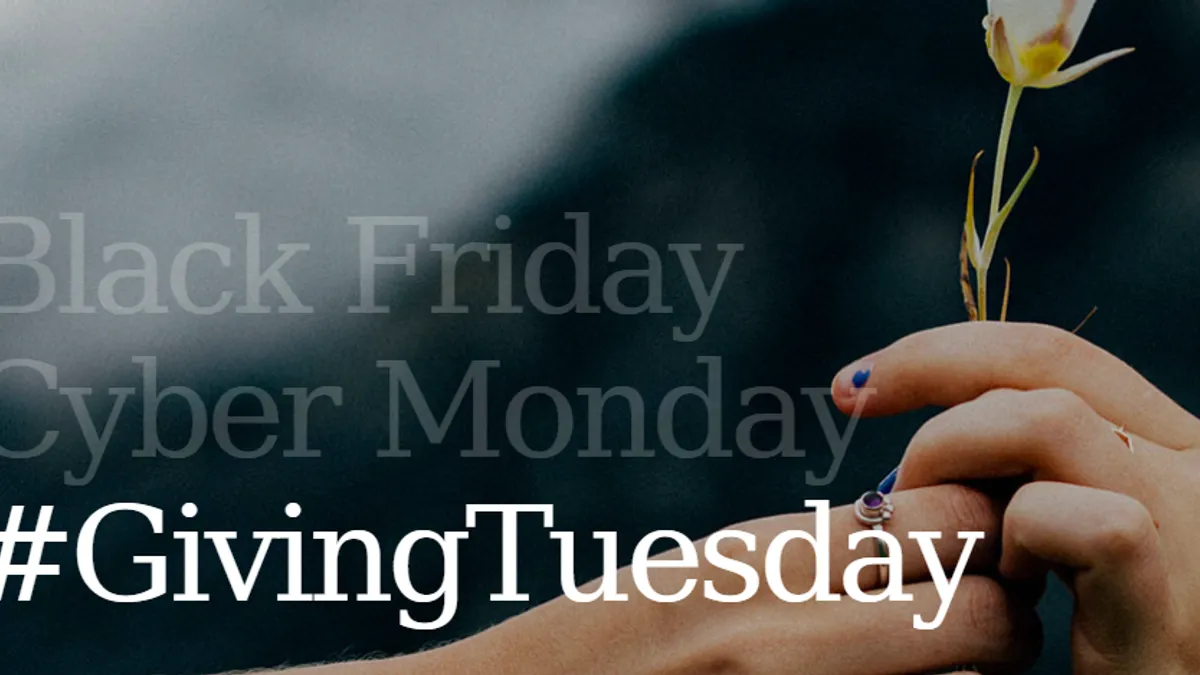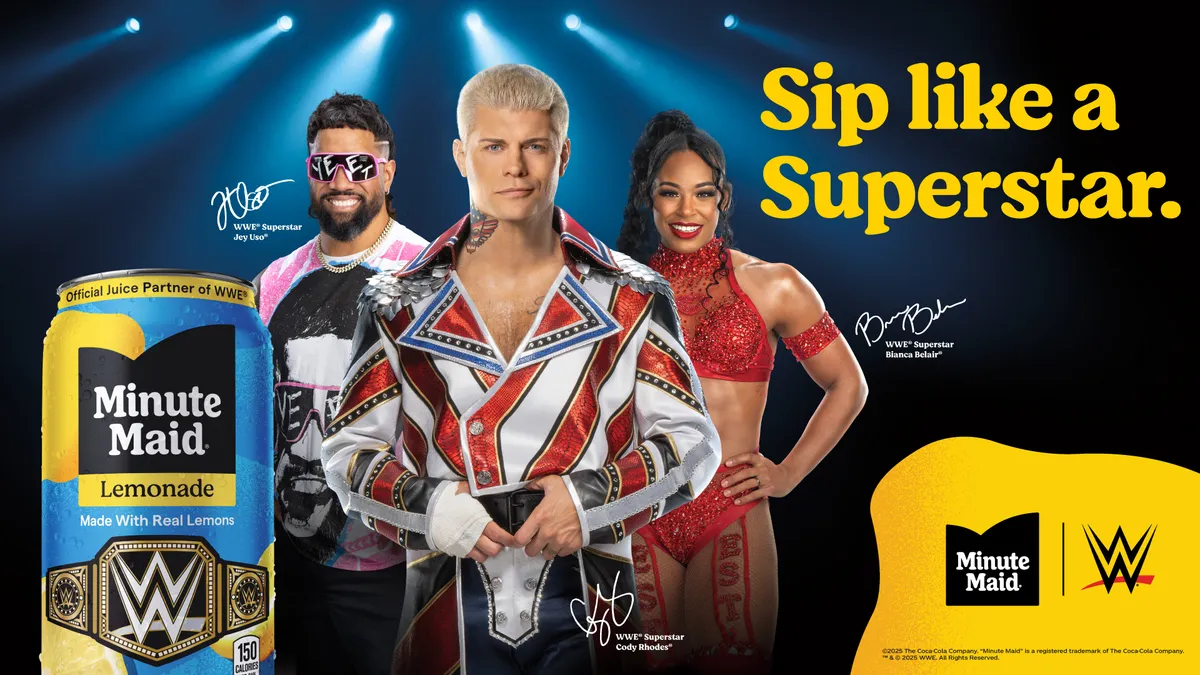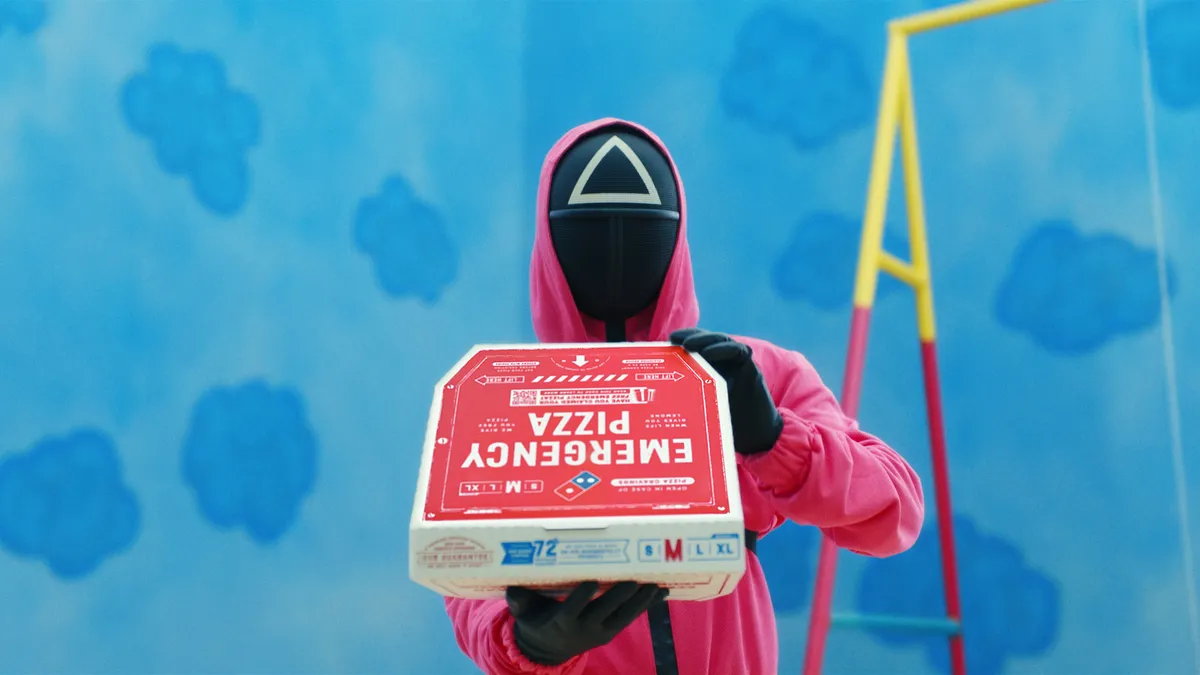Giving Tuesday is now one of the buzziest, busiest moments for nonprofit fundraising, despite humble beginnings as a social movement in 2012. However, the day's rapid rise in popularity has made it hard for even big names like the American Heart Association (AHA) to leave their mark. Those challenges speak broadly to the obstacles that arise around event marketing during crunch times like the holidays.
"This, as a campaign, is starting to align itself with the commercial campaigns we see at that time of year for Black Friday, Small Business Saturday and Cyber Monday," Bethany Maki, VP of nonprofit digital strategy, PMX Agency, said at the Data & Marketing Association's "Disrupt" Washington Nonprofit Conference in February.
Giving Tuesday, slated annually on the Tuesday after Thanksgiving, raised $168 million of donations in 2016 — a 44% year-over-year increase — along with generating 2.3 million social engagements, according to the #GivingTuesday Data Project. Capitalizing on this immense interest has become a must for nonprofit brands. The AHA first dabbled with the movement in 2014, quickly learning that an indifferent approach doesn't fly.
"To be honest, it was really basic," Andrew Magnuson, national director of digital fundraising at the American Heart Association, said on the panel. "We checked the box because we felt obligated to do it."
However, even with that initial, low effort — built on an email push and some lightboxes — the organization noticed a spike in performance that warranted further attention. The journey Giving Tuesday then took the AHA on eventually lead the group to double down on both social media and search tactics in 2016, with rich returns demonstrating the value of an invested marketing strategy.
"What we saw was that it was a pretty effective vehicle for grabbing new donations, and it was overwhelmingly brand-new donors — close to 70% to 80%," said Magnuson, reflecting on the AHA's first giving year. "If we could raise a little bit of money not trying very hard — what happens when we try?"
Warming to social
The holiday season is a huge time for nonprofit brands to acquire both new customers and re-engage old ones, similar to consumer marketing trends. As the AHA geared up its Giving Tuesday strategy for 2016 — the year it went hard on the "try" factor — the brand noticed it wasn't fully connecting with its target audience.
"We had a big chunk of the file we considered to be cold," said Magnuson. "We hadn't been engaging them, stewarding them [or] communicating with them at all."
The answer to re-sparking interest was one likely familiar to many marketers: a big social media push — though one with an important twist and promotions specifically keyed into the spirit of the holidays.
"Social media really saved our butts this year," said Magnuson. "We doubled down [...] and got even more buy-in. We did paid Facebook promotions for the first time ever, which was really valuable for us."
However, rather than drop a huge workload on its communications team in the final stretch heading into Giving Tuesday, the AHA decided a more comprehensive, pre-arranged approach was essential to maximizing impact.
Months in advance, the brand began devising a social media "playbook" that included all content plans, along with what channels to post that content on and when. For the creative itself, a timely sentiment was crucial.
"We commissioned our agency to come up with a bunch of videos that hit 'right in the feels,'" Magnuson said. "The goal was to create an emotional resonance with the organization."
The combination of on-point messaging and an airtight rollout lead the AHA to net almost one-quarter of its Giving Tuesday revenue from social media alone, according to Magnuson.
"That turned out to be a far more effective and meaningful tactic than I anticipated," he said, adding that the AHA "definitely" plans to double down on social again for 2017.
Standing out in the crowd
Social media might have proved key to warming up much of the AHA's "cold" customer file for Giving Tuesday, but marketing through one channel alone still wasn't enough to stand out given how saturated the movement’s become.
"Holiday campaigns, unless you have a truly relevant ask, have kind of started falling off," noted Maki. "Like all good fundraising tactics, it's starting to get cluttered as the years go on."
That’s largely been true for consumer marketing as well, where efforts fell flat last holiday season when many retailers and CPG brands regurgitated the same cookie-cutter tactics centered around markdowns and discounts. Honing a more specific, on-brand message is necessary, according to experts.
"Just saying Tuesday is going to be my 'giving day' [...] doesn't give anybody incentive," Jessie Salpeter, senior digital account executive at Chapman Cubine Adams + Hussey, said on the panel. "It's really important to give a name that is mission-driven."
But while creativity undoubtedly counts for distinguishing a brand, the "arms race" that's heated up around search engine marketing (SEM) presents another, perhaps even more significant obstacle, per Magnuson. For the AHA, sheer force of will became the best solution to coming out on top for SEO.
"We just said, 'We're going to spend our way out of this thing, no matter what it costs," Magnuson said. "If someone types in 'Giving Tuesday' [...] we want to be up at the front.'"
The need to double down investments, not only on social media, but also in the SEM space points to an overall shift in how marketing is run around major events like the holidays.
"What we're seeing [is] the long-term general decline in email as being the single most effective leverage driving gifts," Magnuson said. "Supplementing with search engine marketing [and] Facebook, social media, paid promotions, organic social media promotions — these are very rapidly becoming the biggest, most important drivers for us outside of email."
'What happens when we try?'
The AHA's Giving Tuesday tactics in 2016 ultimately yielded impressive results, but the effort — like any solid marketing effort — wasn't over at the day's end and required some serious post-game analysis.
"It's really important to evaluate your data, see if it was successful," urged Salpeter. "Even if you wanted it to be successful and it wasn't, it's important to take that data and that information and build upon it."
For Magnuson and the AHA, the 2016 holiday push, and the social promotions, in particular, uncovered new insights into what types of campaigns work for specific subsets of their customer base.
"My goal wasn't necessarily to raise a ton of money directly from Facebook," said Magnuson. "I really wanted to come away with some learnings. [If it was] successful, great, but I mostly want to come out on the other side of this thing with some pretty specific insights as to what types of messaging works for different audience types."
The findings, in the end, were fairly basic: millennials responded to aspirational messaging; Gen Xers to family-oriented creative and Boomers to multi-generational connections. However, that fundamental framework is one that will inevitably be improved on and built out in the Giving Tuesdays ahead and as the AHA continues to add more moves to its marketing playbook.
"We're definitely not there — we don't have it dialed in yet — but we're on a path to understanding what makes different donor types click," Magnuson said.























